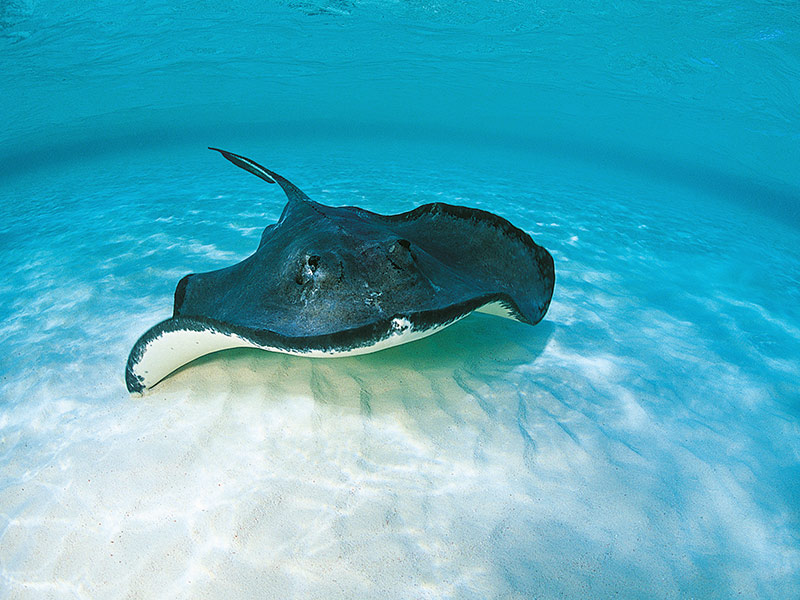Hurry! Offer ends soon!

Southern Stingray





A flat fish with a diamond shaped body and wing-like pectoral fins, the Southern stingray is adapted for life on the sea bed. They all have a white underside but vary in colouration on their upperside with juvenilles displaying dark grey tones and adults an olive brown/ green. They have a long slender tail which possesses a serrated, poisonous spine and this is used for defence. Although not fatal (apart from the freak incident where the late Steve Irwin was stabbed in the heart), the sting is incredibly painful to humans if trodden on.
Stingrays are very closely related to sharks. They share similar senses e.g. electroreception ,as well as body features - they both have a skeleton made of cartilage rather than bone. This makes them very flexible and agile swimmers.
Southern stingrays feed on invertebrates and small fish with hunting usually occuring at night. They use their wing-like fins to disturb sand on the sea bed and expose prey.
There is very little knowledge about the natural mating behavious of this species of stingray as it has been rarely encountered in the wild. However through the Oceanarium’s own observance, following a successful southern ray breeding programme, it appears that the male will closely follow the female stingray before grasping and biting her fins. Gestation can range from five to seven months and the litter can vary from two to ten pups.
Over 15 southern stingrays have been successfully reared at the Oceanarium, all of which have been re-homed within other aquaria as part of our co-ordinated breeding programme.
The Oceanarium’s current Southern stingrays are displayed in Shark Wreck Reef and visitors can find out more about our stingrays at our 1,30pm Ocean Tank talk.
Get the best price!